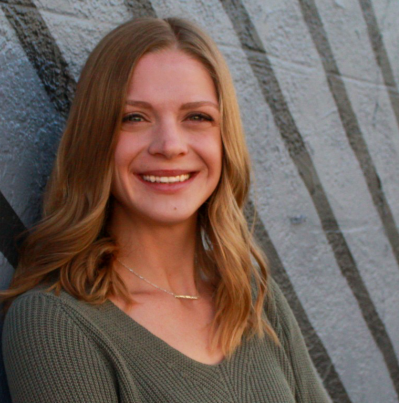
Autistic Masking and Practitioners: Why Professionals Should Be Talking About What’s Not Being Said
May 5, 2022
When it comes to masking, many of us have probably heard about it. We might even be able to explain what it is to a friend or family member. But do we really know how to identify it or, even more importantly, factor it into an autism diagnosis?
What is Masking, and Why Does it Matter?
For the unfamiliar, masking or “camouflaging’’ is a term that is commonly used and discussed among the autistic community. It means mirroring one’s behaviors to match those of neurotypicals or what society expects of them. Research is beginning to look into the negative effects of masking on the autistic community and its impacts on receiving a diagnosis, but what we have so far is limited.
What makes it so elusive is that there is much more to masking than meets the eye. Masking includes the suppression of your thoughts, behaviors, and identity using both conscious and unconscious means (Miller). Conscious masking might look like mimicking facial expressions, using practiced scripts, or dressing differently than what you would prefer in order to fit in. Unconscious masking is unintentionally suppressing parts of one’s identity, and this can be hard to identify and describe for both the individual and the observer.
As research into masking increases we’re finding that it may be a reasonable explanation for why 3-4 times as many males are diagnosed with autism as compared to females. This is due to the fact that testing is not designed for females nor designed to pick up on the subtleties of their masking. Masking has also been linked to late diagnosis and a range of negative outcomes including chronic fatigue, burnout, anxiety and/or depression, and even suicidality (suicidal ideation, plans, and attempts) (Miller).
Considering all of this, we can begin to see why it is paramount that professionals take masking into consideration when evaluating for autism. The days of simply relying on standardized tests and parent intake forms need to be left behind. For starters, these tests were really only designed to detect autism in boys because they lacked the knowledge and understanding of female autistic traits and characteristics. While the tests screen for restricted interests, we have found that this really only applies for autistic boys as their patterns and topics of restricted interests tend to be well understood. However, autistic girls and women tend to have restricted interests that more closely resemble those of neurotypical peers such as pop culture and fashion (Russo). Furthermore, autistic women may mask their interests or mirror the interests of peers more often than men. Therefore, these interests are not probed further as they are not deemed “atypical.” While I could keep going on this topic (there are a ton of great resources emerging centered on autistic traits in girls and women), let’s get back to masking.
Why We Need to Re-Write the SOP (Standard Operating Procedure)
The standard operating procedures and standardized tests for autistic evaluations don’t screen or dig into autistic masking at all. That’s because they weren’t designed to look for it in the first place, and we weren’t taught to either. Many professionals were not trained to consider masking or even told what it is. Speaking from my own experience, I have only been out of graduate school for six years and was not trained on masking nor to look for masking when evaluating for autism. Shout out to the #actuallyautistic voices on social media for speaking up and catching us up to speed. This speaks to the value of elevating the voices of whom we aim to serve and not relying just on our schooling.
We also have to follow the newly-published (and more progressive) research. If we’re listening, this research is telling us that the autistic community relies heavily on masking (both conscious and unconscious) to fit in a world that wasn’t designed for them (and quite frankly isn’t too keen on making any adjustments to accommodate or support them either). It is also important to note that when asked to report whether or not they mask, no gender differences have been observed in autistic adults (Hull). However, we must also consider that most research into autism has a binary approach to gender. We must remember that a substantial population of the autistic community report a non-binary or gender fluid identity (Hull). For this group of people, we need to consider a double-masking effect (i.e., masking both autistic characteristics and attempting to align to cisgender and binary societal norms). Think for a moment how this affects a person. Can you imagine the negative effects this might have on identity and mental health?
So, Where Do We Go From Here?
Now that we’ve discussed why we need a new set of plans, let’s talk about how to look for masking. First, picture your typical evaluation setting. You’re likely sitting in a tiny room (with overwhelming sensory stimulation like fluorescent lights, ambient noises, etc.). To your client, you’re an unfamiliar individual and this is an unfamiliar environment. Masking is likely happening. Maybe the client wants to self-regulate and stim (e.g., flap their hands, rock, walk back and forth) but chooses a less outward or “atypical” stim to appear more typical (e.g., tapping a pen, biting their cheek, playing with their hair, tapping their foot). Maybe they want to tell us all about their special interest in celebrity gossip, but they have been told by adults time after time to not assume everyone cares about celebrity gossip as much as they do. So when we ask them what they love, they give a vague and short response of reading online tabloids and following celebrities on Instagram. On the surface level, that response paired with some tapping of the foot may appear typical. But remember, masking is the difference between how people appear in social contexts and what is happening to them on the inside. Considering what we now know, we can see that this is potentially conscious masking, and we should be looking for and noting these behaviors. As practitioners, it is our job to put together a body of evidence, and if other information (e.g., parent interview, school report) is showing some areas that could fit into an autism diagnosis, we shouldn’t be complicit in saying, “they didn’t show any red flags in their time with me.”
As research into masking improves and grows, so do the resources. Continue to stay up to date with research, listen to autistic voices, and consider adding some new assessment procedures into your evaluation process. One such process may be a more in-depth client interview which could include asking them about their day-to-day behaviors and experiences (e.g., “What does ‘fitting in’ mean to you?”). We should also consider asking about their experience during the evaluation. Consider also asking parents more in-depth questions to determine if masking is occuring (e.g., “How does your child’s behaviors and communication differ at home vs. in the community, and with household members vs. unfamiliar people? Does your child make statements about fitting in or their identity?”). All of these may provide key insight into an autism diagnosis.
If you are looking for a more formal method, a new resource developed in 2018, the Camouflaging Autistic Traits Questionnaire (CAT-Q) could be added to your evaluation repertoire. The CAT-Q is a valid and reliable self-report measure of adults’ social camouflaging behaviors. This could be used as a screening tool for individuals who may be missed under current autism diagnostic criteria because they mask. Sure, it won’t lead to an autism diagnosis on it’s own, but it could be the key diagnostic piece for many autistic individuals. If evaluating an adolescent, you could use some of the questions more informally to perform an interview as noted above.
Final Thoughts
Dismissing an individual based on outdated norms and evaluation procedures could mean years of continued masking. This may lead to isolation, physical exhaustion, anxiety, a lack of true sense of identity, and not to mention years of missed opportunities for support. A correct diagnosis early in life can lead to the individual embracing their identity and learning to be their authentic selves. Sure they might decide to mask from time to time, but let’s let that be on their own terms. Out and Out.
References:
Hull, L., Petrides, K.V. & Mandy, W. The Female Autism Phenotype and Camouflaging: a Narrative Review. Rev J Autism Dev Disord 7, 306–317 (2020). https://doi.org/10.1007/s40489-020-00197-9
Danielle Miller, Jon Rees, and Amy Pearson. Autism in Adulthood. Dec 2021.330-338.http://doi.org/10.1089/aut.2020.0083
Russo, Francine. “The costs of camouflaging autism / Spectrum.” Spectrum / Autism Research News, 21 February 2018, https://www.spectrumnews.org/features/deep-dive/costs-camouflaging-autism/. Accessed 7 February 2022.
Continued Learning:
Blogs:
https://www.tiimoapp.com/blog/art-of-masking-women-with-autism/
https://embrace-autism.com/autism-and-camouflaging/
Books:
Camouflage: The Hidden Lives of Autistic Women, Author: Sarah Bargiela
About the Author

Kim Spurlock is a speech-language pathologist who provides speech-language services to students in the schools. She spends the majority of her time working with adolescents and has seen firsthand how impactful those years are in establishing an individual’s confidence and self-identity for who they will become. Most recently, she has started Out & Out Communication and Relationship Services with her husband who is also an SLP. She is on a mission to support, educate, and empower neurodivergent adults and adolescents on how to establish and maintain successful, safe, and fulfilling relationships across their lifetimes.

